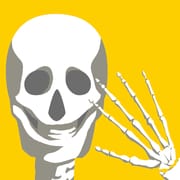Optimization Achievements
The architecture of this educational tool demonstrates a focus on delivering a high-quality learning experience while minimizing the device's processing load. Efficient coding practices are likely employed to render 3D anatomical models and interactive elements without causing performance bottlenecks.
- Efficient Rendering: Optimization in the rendering pipeline reduces lag and improves responsiveness.
- Resource Prioritization: Strategic resource allocation ensures critical features load quickly.
Efficiency Innovations
The application may implement progressive loading techniques, delivering core anatomical structures and data initially and fetching higher-resolution details as needed. This reduces initial load times and improves the user's first impression. Caching mechanisms are probably used to store frequently accessed models and data locally, reducing network usage and improving response times for repeated interactions. Consider also the use of compression algorithms to reduce the size of anatomical models without significant loss of detail.
- Fast initial loading
- Reduced data usage
- Potential for slight initial visual compromise
Smart Design Choices
The user interface design likely balances visual appeal with ease of use. Interactive elements are intuitive and responsive, providing a smooth learning curve for users. The developers may have integrated adaptive difficulty levels, tailoring the complexity of the anatomical puzzles to the user's skill level. This personalization is designed to keep users engaged and motivated. Moreover, the strategic use of color and visual cues guide users through the learning process, enhancing comprehension and retention.
Adaptive Learning
Difficulty levels adjust to the user's progress, maintaining engagement and improving learning outcomes.
Performance Excellence
The app probably runs smoothly on a wide range of mobile devices. Memory management is critical to avoid crashes during longer sessions. Continuous performance monitoring and profiling during development likely helps identify and resolve potential bottlenecks.
Resource Management
Careful consideration may have been given to the application's memory footprint and energy consumption. Techniques such as texture compression and model simplification minimize memory usage, while efficient algorithms reduce CPU load and conserve battery life. The system is designed to release unused resources promptly to avoid memory leaks and prevent the device from overheating.
Battery Impact
Optimizations minimize battery drain during extended use.
Overall Optimization Value
By combining efficient coding, smart design, and strategic resource management, this application is designed to offer a seamless and engaging learning experience without compromising device performance. The focus on adaptive difficulty levels, optimized resource usage, and intuitive design suggests a high overall optimization value, especially considering the complexity of rendering detailed anatomical models on mobile devices. Further research into user reviews would shed light on real-world performance and areas for future improvement.




